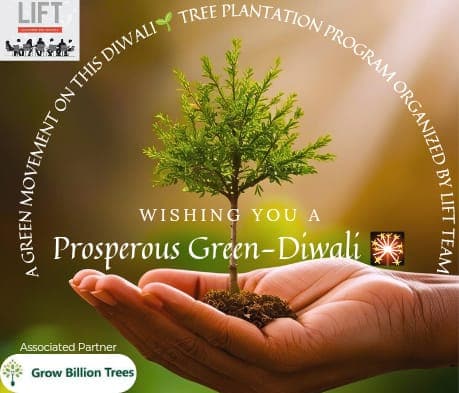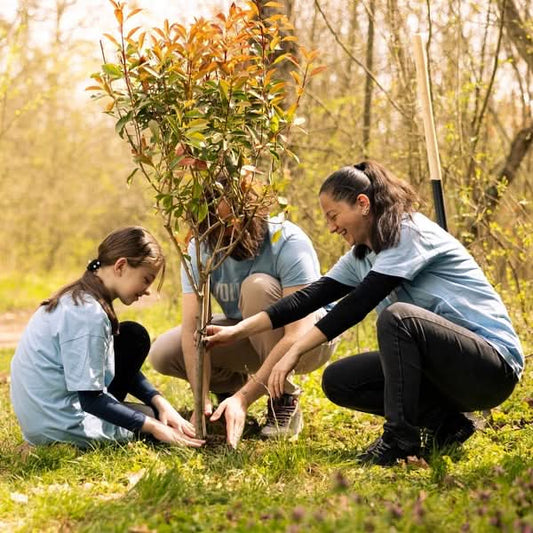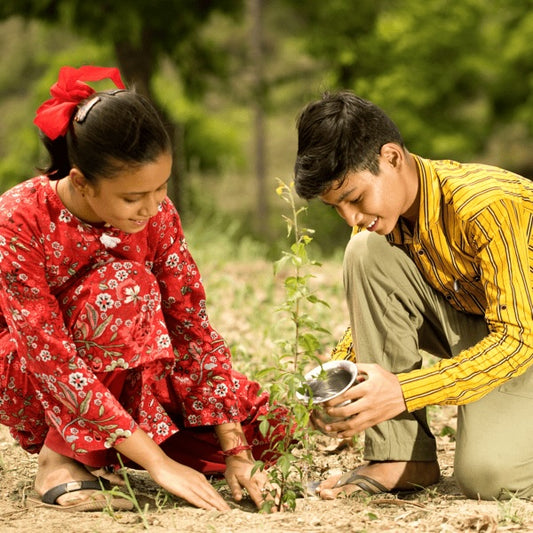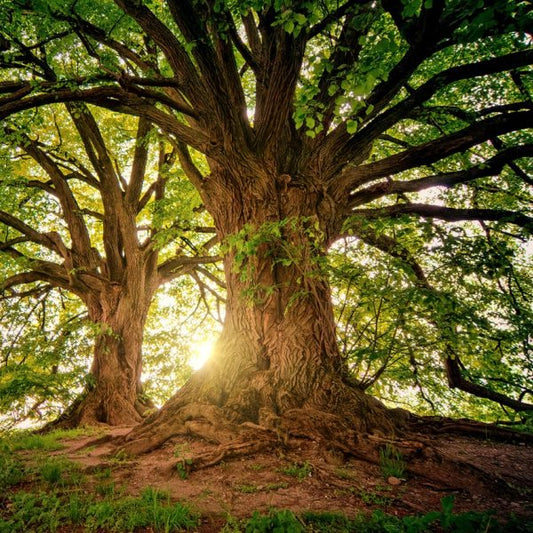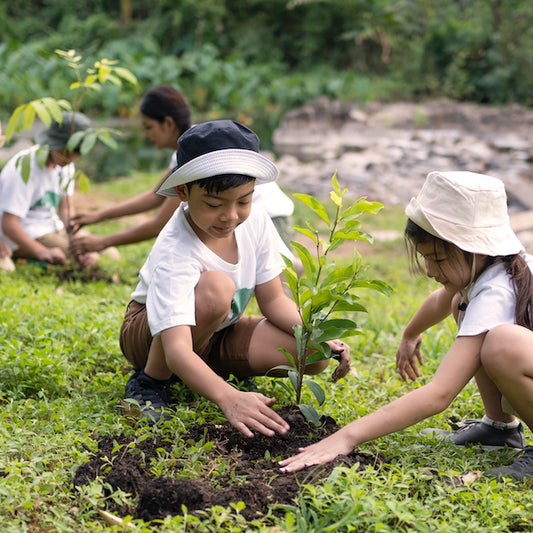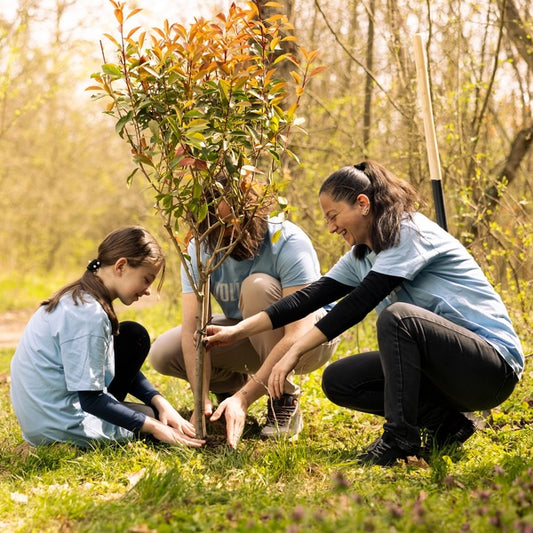Eco-Inclusive: Cognex Unites for Environment Day
In honor of Environment Day, Cognex embraced environmental responsibility and social impact through a purposeful tree plantation initiative grounded i Read more
Project Update 3
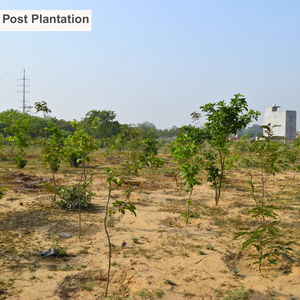
Project Update 2
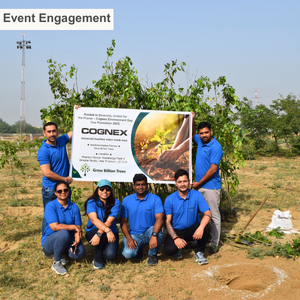
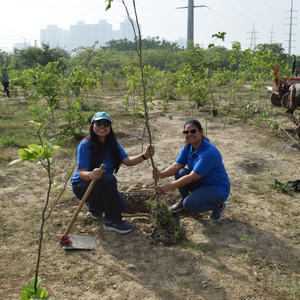
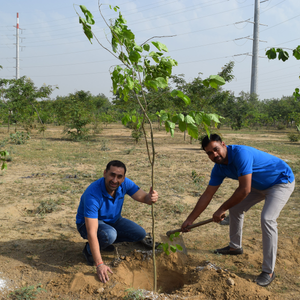
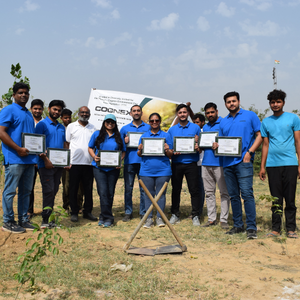
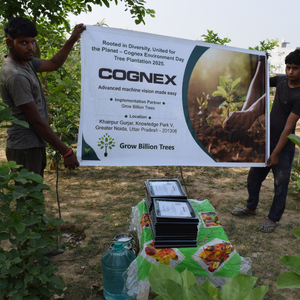
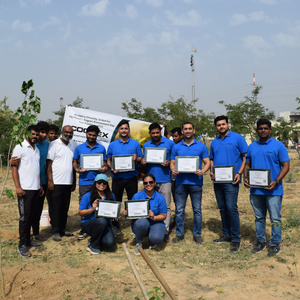
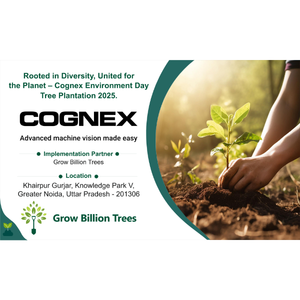
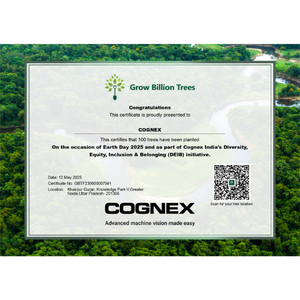
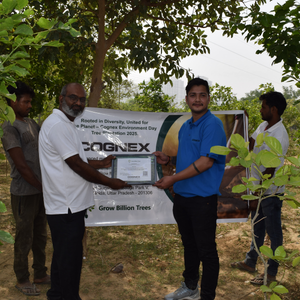
Project Update 1
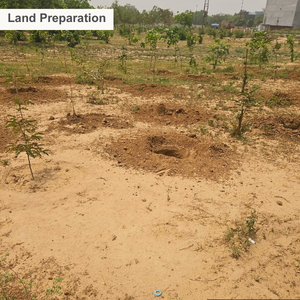
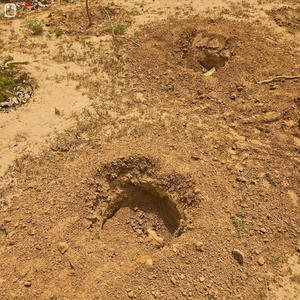

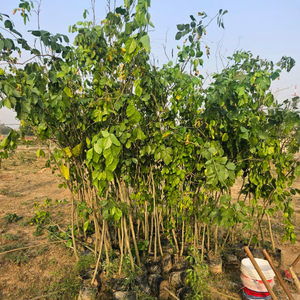
Digital Forest
Forest with 100 Trees planned
Want to plant your tree now?
Plant a Tree @ 299Trees Planted
Eco-Inclusive: Cognex Unites for Environment Day
In honor of Environment Day, Cognex embraced environmental responsibility and social impact through a purposeful tree plantation initiative grounded in the urban forest concept. This thoughtful activity was not just about planting trees, it was about cultivating a greener planet while celebrating the company’s core values of Diversity, Equity, Inclusion & Belonging (DEIB).
Held in a carefully chosen urban space, the plantation drive united Cognex employees in a hands-on effort to give back to the environment and the community. By enhancing green cover in urban landscapes, Cognex is taking tangible steps toward climate action, fostering biodiversity, and mitigating the effects of urbanization.
More than just an environmental gesture, this initiative served as a powerful DEIB activity, creating a shared experience that brought employees together across backgrounds, promoting a sense of belonging and collective purpose. Through this event, Cognex aimed to inspire its workforce and wider community to take ownership of a sustainable future, one tree at a time.
Rooted in innovation and responsibility, Cognex’s Environment Day plantation embodies its vision of driving change, both through technology and thoughtful action for the planet.
Project Planning & Execution
No of Trees: 100
Plantation Location: Khairpur Gurjar, Knowledge Park V, Greater Noida, Uttar Pradesh 201306
Plantation Date: 16th May 2025
Name of Species: Karanj
Species Selection & Its Benefits:
The species selected for Cognex’s urban forestry initiative were thoughtfully chosen to align with the local ecosystem and deliver maximum ecological value. The plantation focused on native and medicinal species. Medicinal plant such as Karanj was included for its significant ecological and therapeutic benefits.
The Karanj tree (Pongamia pinnata), also known as Indian Beech, offers a wide range of environmental, medicinal, and economic benefits. It is a fast-growing, drought-resistant tree commonly found in tropical and subtropical regions of India. Karanj seeds are a rich source of oil that can be used as a biofuel, making it a sustainable energy option. Its leaves, bark, and oil have been traditionally used in Ayurvedic medicine for treating skin diseases, wounds, and inflammation due to their antibacterial and anti-inflammatory properties. The tree also plays an important ecological role, as it improves soil fertility through nitrogen fixation, helps prevent erosion, and requires minimal maintenance.
These species were chosen not only for their environmental benefits, such as improving air quality, preventing soil erosion, and enhancing water retention, but also for their ability to provide shade, reduce urban heat, and offer food sources for local communities. This thoughtful selection ensures that the trees serve both ecological and social purposes, creating a lasting positive impact on the urban landscape.
Beneficiaries Details
-
Target Population: Employees, stakeholders, and local community members of Greater Noida
-
Age Group: All age groups focus on adults to seniors
-
Gender: Inclusive of all genders
- Social & Economic Status: Open to all social and economic backgrounds, emphasizing community involvement
Planting Methodology and Its Advantages
Urban Forestry: An urban forest is a network of trees, shrubs, and vegetation strategically planted in urban areas to enhance biodiversity, improve air quality, reduce the urban heat island effect, and provide green spaces for community well-being. It helps mitigate climate change by absorbing carbon dioxide, promotes mental health through accessible green areas, and supports local wildlife by creating habitats. Urban forests play a vital role in building resilient, sustainable cities that benefit both the environment and the people who live in them.
Advantages of Urban Forestry
-
Climate Regulation and Cooling Effect: Urban forests help mitigate the urban heat island effect by providing shade and cooling through transpiration, lowering city temperatures, reducing the need for air conditioning, and conserving energy.
-
Improved Air Quality: Trees absorb pollutants like carbon dioxide, nitrogen oxides, and particulate matter, leading to improved air quality and reducing the risk of respiratory illnesses in urban areas.
-
Stormwater Management and Flood Prevention: Urban forests improve the soil’s ability to absorb and retain water, reducing stormwater runoff, preventing flooding, and promoting groundwater recharge, thus helping manage water resources efficiently.
-
Soil Erosion Control: The deep root systems of trees prevent soil erosion, especially in areas with heavy rainfall or steep slopes, stabilizing the land and reducing soil loss in urban environments.
-
Aesthetic and Recreational Value: The transformation of unused spaces into green zones adds aesthetic value to the area and provides employees and local communities with recreational spaces, making the workplace more enjoyable.
-
Enhanced Community Engagement and Well-being: Urban forests provide accessible green spaces where communities can engage in recreational activities, improving mental health, reducing stress, and fostering a sense of environmental stewardship among residents and employees.
-
Increased Property Value: Properties located near urban forests or green spaces tend to have higher market values, benefiting local property owners and increasing the overall appeal and livability of the area.
- Noise Reduction: Urban forests act as natural sound barriers, reducing noise pollution and creating quieter, more peaceful surroundings.
Activities During Tree Plantation
The tree plantation drive by Cognex at Khairpur Gurjar, Knowledge Park V, Greater Noida, Uttar Pradesh 201306, was organized to celebrate Environment Day and witnessed enthusiastic employee participation, reinforcing the spirit of sustainability, unity, and community action.
The event was thoughtfully designed to ensure an engaging and seamless experience for all involved. The plantation site was pre-prepared with dug pits, ensuring efficiency and readiness for sapling placement. Cognex employees actively participated in planting native tree species, contributing directly to the creation of a thriving urban forest ecosystem. Each sapling was positioned with care, with guidance on planting techniques to ensure long-term growth and resilience.
Throughout the activity, employees gained hands-on exposure to the importance of green cover in urban landscapes, enhancing their environmental consciousness. Their involvement not only promoted teamwork but also nurtured a deeper connection to nature and sustainability.
The day concluded with a collective reflection session, where participants shared their thoughts on environmental stewardship and the role of corporations in driving climate action. To wrap up the meaningful experience, light refreshments were served, offering everyone a chance to unwind, bond, and celebrate their contribution to a greener tomorrow. This initiative stood as a testament to Cognex’s dedication to Earth care, employee engagement, and building a healthier planet for future generations.
Conclusion Elements
Impact
Direct Impact
| Parameters | Values | References |
| No. of Trees Planted | 100 | |
| Green Cover (Acres) | 0.02 | |
| Carbon Sequestration Potential (KG) | 20 |
Small to medium-sized trees can sequester around 10–48 kilograms (22–106 pounds) of CO₂ annually. https://growbilliontrees.com/blogs/knowledge/how-much-co2-can-one-tree-absorb |
| Carbon Sequestration by 100 mature trees ( Tons/year) | 2 Tons | No. of Trees x Carbon Sequestration by 1 mature trees per year |
| Carbon Credit Equivalent | 2 | One carbon credit is equivalent to one tonne of carbon dioxide or the equivalent amount of another greenhouse gas. |
| Carbon Footprint of an avg Indian Citizen (Tons/Year) | 1.8 | https://www.iea.org/countries/india/emissions |
| Offsets Annual Carbon Footprint of (Adults) | 1 | Carbon offset by 100 mature trees per year / Carbon Footprint of an avg Indian Citizen per year |
*This impact analysis is forward-looking. An urban-forest project matures in 3-5 years.
Indirect Impact
Community Impact
-
Improved Public Health: By improving air quality and reducing urban heat, the project indirectly contributes to better public health. The presence of green spaces encourages outdoor activities, which can reduce stress levels, promote mental well-being, and decrease the incidence of respiratory diseases.
-
Environmental Awareness: Involving communities in urban forestry raises awareness about environmental conservation and promotes sustainable practices in daily life.
-
Employee Morale: The initiative fostered a sense of pride and connection among employees, strengthening team bonds and their alignment with the company’s values.
-
Inspiration for Change: By showcasing the potential of urban forestry, the project has encouraged other organizations and local communities to undertake similar initiatives.
- Cultural Shift: The initiative instilled a mindset of sustainability and environmental care among participants, creating advocates for green practices in their personal and professional lives.
Environmental Impact
-
Carbon Sequestration: The trees planted through Cognex's urban forestry initiative absorb carbon dioxide, acting as carbon sinks and helping mitigate climate change by reducing greenhouse gas emissions.
-
Soil Health Improvement: The tree planting initiative enhances soil health by enriching it with organic matter, improving soil fertility and structure, which supports the growth of surrounding vegetation.
-
Erosion Prevention: Tree roots help stabilize the soil in urban areas, preventing erosion caused by wind and water while safeguarding nearby properties and infrastructure from potential damage.
-
Biodiversity Conservation: By creating green spaces, the initiative supports local biodiversity, providing habitats for various species, pollinators, and beneficial insects, and enhancing the ecological balance in urban areas.
-
Water Cycle Regulation: The urban forestry project helps regulate the water cycle by improving water retention in the soil, recharging groundwater levels, and reducing surface runoff, leading to a more balanced and sustainable urban environment.
- Microclimate Regulation: Trees planted through this initiative moderate temperature extremes, reduce wind speeds, and increase humidity, creating a favourable microclimate for both the community and the urban ecosystem.
Achievements
SDG Goals Achieved through Urban Forestry
-
SDG 3: Good Health and Well-Being – Cognex’s urban forestry project enhances air quality and creates green spaces that promote physical and mental well-being, reducing stress and fostering a healthier urban lifestyle.
-
SDG 6: Clean Water and Sanitation – Trees play a crucial role in water conservation by enhancing groundwater recharge, reducing surface runoff, and improving overall water retention. Cognex’s initiative supports sustainable urban water systems through afforestation and green infrastructure.
-
SDG 7: Affordable and Clean Energy – By mitigating the urban heat island effect, Cognex’s tree plantation efforts help lower ambient temperatures and reduce reliance on artificial cooling. The shade provided by trees enhances energy efficiency and promotes a more sustainable urban climate.
-
SDG 8: Decent Work and Economic Growth – The initiative generates employment opportunities in tree planting, maintenance, and ecological restoration, contributing to local economic development and green job creation.
-
SDG 9: Industry, Innovation, and Infrastructure – Cognex integrates sustainable urban forestry into infrastructure planning, promoting green innovation and enhancing urban resilience.
-
SDG 10: Reduced Inequalities –The initiative ensures inclusivity by engaging employees from diverse backgrounds in environmental conservation. By creating accessible green spaces, Cognex promotes environmental equity and ensures that all communities, including marginalized groups, benefit from cleaner air, mental well-being, and recreational opportunities.
-
SDG 11: Sustainable Cities and Communities – Cognex’s commitment to urban afforestation contributes to creating more sustainable and resilient cities by increasing green cover, improving air quality, and enhancing urban biodiversity.
-
SDG 12: Responsible Consumption and Production – Cognex’s commitment to sustainability is reflected in its responsible approach to urban forestry, focusing on resource efficiency and long-term environmental benefits.
-
SDG 13: Climate Action – The plantation initiative actively supports climate action by sequestering carbon, reducing greenhouse gas emissions, and mitigating climate change effects through the expansion of green spaces.
-
SDG 15: Life on Land – By restoring green spaces with native and fruit-bearing trees, the initiative strengthens biodiversity, supports wildlife, and contributes to a thriving urban ecosystem.
-
SDG 16: Peace, Justice, and Strong Institutions – By fostering inclusive decision-making and community-led governance, Cognex strengthens local environmental stewardship, ensuring transparency and collaboration for sustainable urban development.
- SDG 17: Partnerships for the Goals – The initiative thrives on collaboration with local communities, environmental organizations, and partners such as Grow Billion Trees. Cognex strengthens environmental partnerships to drive impactful urban sustainability and afforestation efforts.
ESG Achieved through Urban Forestry
-
Environmental Impact: Cognex’s urban forestry initiative significantly enhances environmental sustainability. By planting diverse tree species, the company boosts biodiversity, creates habitats for wildlife, and supports local ecosystems. Trees act as carbon sinks, reducing CO2 levels and mitigating climate change. Additionally, the initiative improves urban climate resilience by regulating temperatures, reducing the heat island effect, and enhancing water retention, ensuring long-term ecological health for future generations.
-
Social Impact: Cognex’s urban forestry initiative fosters community engagement and well-being by encouraging local participation in tree planting and environmental awareness. The green spaces created improve air quality, promote physical activity, and enhance public health. The project generates job opportunities in tree planting and maintenance while promoting social equity by ensuring access to green spaces for all, including marginalized groups. These efforts build a more inclusive, resilient, and sustainable community.
- Governance Impact: Cognex demonstrates strong leadership and commitment to sustainability through its urban forestry initiative. The company ensures transparency and accountability by effectively communicating project plans and outcomes to stakeholders. By collaborating with environmental organizations and local communities, it amplifies the impact of its efforts. This approach aligns with best governance practices, achieving environmental and social goals while promoting long-term sustainable growth.
Building Communities
One of the most impactful outcomes of Cognex’s urban forestry initiative was the sense of unity and collaboration it cultivated. By involving employees, local communities, and volunteers, the project became a collective mission to create sustainable urban green spaces, fostering a shared commitment to a greener future.
-
Empowering Communities: Participants became active contributors, gaining knowledge about urban forestry practices and taking ownership of the initiative. This empowerment strengthened their connection to the environment and reinforced their role as environmental stewards.
-
Fostering Partnerships: The project brought together diverse stakeholders, including Cognex, Grow Billion Trees, and local communities, highlighting the value of collaboration in achieving environmental and social goals.
-
Creating a Ripple Effect: As communities experienced the benefits of urban forestry, their enthusiasm inspired others to adopt similar practices, amplifying the initiative's positive impact across the region.
This initiative demonstrates that environmental sustainability thrives when rooted in collective effort. It’s not just about planting trees; it’s about planting hope, collaboration, and a shared vision for a healthier and greener future.
Commitment by Grow Billion Trees
Trees for Corporates
Trending
Most Popular
1. Cognex Environment Day Initiative
When machine vision meets mission green, you get Cognex’s Environment Day Initiative! Known for sharp-eyed robots, Cognex took a break from decoding barcodes to decode climate change, one sapling at a time. This Environment Day, employees traded keyboards for shovels and stepped into the soil, planting trees in an urban forest setup. Why? Because even tech giants need oxygen. This wasn’t just about greenery—it was a celebration of Diversity, Equity, Inclusion & Belonging (DEIB), proving that nature doesn’t discriminate. Everyone got their hands dirty for a cleaner tomorrow. It's eco-meets-equality, and frankly, it looks great on Cognex. With roots in innovation and branches in sustainability, Cognex is making Environment Day less about slogans and more about saplings. #CognexEnvironment Day #TechGoesGreen
2. Cognex Urban Forest Project
Welcome to the jungle, Cognex edition! The Cognex Urban Forest Project is where silicon meets soil. This initiative transformed a dull urban space into a leafy haven, proving that even the most high-tech companies have a soft spot for leaves. Think of it as reprogramming cities with oxygen. It’s a bold step that aligns Cognex’s futuristic vision with Mother Nature’s age-old wisdom. As trees rise, so does community spirit, carbon capture, and curb appeal. The urban forest is not just a green patch—it’s a living monument to Cognex’s belief in sustainability and inclusivity. When nature and innovation shake hands, it looks like this. #CognexUrbanForest #GreenVision
3. Cognex DEIB Tree Plantation
Who says tree plantations can’t have a DEIB twist? Cognex DEIB Tree Plantation redefined team-building by turning inclusive values into inclusive canopies. Employees from all walks of life joined hands—and shovels—to plant trees that stand for more than just greenery. Each sapling symbolized unity, respect, and shared purpose. It wasn’t just about adding trees; it was about deepening roots of belonging. When DEIB and CSR cross paths, they leave a trail of green behind. Cognex showed that climate action isn't just smart—it's inclusive. So next time you think of a DEIB initiative, imagine it with sunlight and chlorophyll. #DEIBRoots #CognexForAll
4. Tech Meets Trees Cognex Style
robotics brains getting dirty in the name of biodiversity. It’s like Iron Man planting a garden—cool, unexpected, and very necessary. This quirky initiative added a natural dimension to Cognex’s techy DNA. After all, what’s the point of automation if the planet isn’t around to enjoy it? By merging AI with actual intelligence (you know, planting trees), Cognex proves that being smart isn’t enough—you’ve got to be green too. #TechMeetsTrees #GreenGenius
5. Cognex Climate Action Drive
they kind of do). But instead of infrared sensors, this mission relied on sunlight, soil, and sweat equity. It wasn’t just another checkbox on the CSR list—it was a genuine commitment to curb carbon and create shade (literally and figuratively). The goal? Cool the planet, lift the people, and throw in some biodiversity while they're at it. Cognex showed that even in a world of automation, real change starts with human hands—and sometimes a sapling or two. #CognexClimateAction #RootsOfChange
6. Cognex Environmental Responsibility
Being a tech leader isn’t just about leading in innovation—it’s about leading in responsibility. With Cognex Environmental Responsibility, the company planted more than trees; it planted a message. The message? “Hey, environment—we see you, we hear you, and we’re doing something about it.” Cognex’s tree plantation initiative in urban forests brought a breath of fresh air—literally—to cities choking on concrete. The move was part love letter to nature, part bold stand against climate complacency. It’s not every day a vision tech company says, “Let’s make Earth great again.” But Cognex did, and with flair. #EcoCognex #ResponsiblyRooted
7. Tree Plantation by Cognex Employees
Forget gym memberships—Cognex employees got their workout planting trees! The Tree Plantation by Cognex Employees was equal parts cardio and karma. Swapping screens for saplings, the team turned an ordinary Environment Day into an extraordinary impact. But it wasn’t just about digging holes—it was about filling gaps in the urban ecosystem and growing a workplace culture rooted in care. As the trees grow, so does employee pride and environmental awareness. Cognex didn’t outsource sustainability—it rolled up its sleeves and got muddy. Now that’s what we call hands-on leadership. #PlantedByCognex #EarthDayInAction
8. Cognex Sustainability Through Plantation
count the trees. This initiative showed that Cognex isn’t just building a smarter future—it’s growing a greener one too. While machines automate industries, these trees are automating fresh air production. Talk about a win-win. With every sapling planted, Cognex moved closer to its vision of sustainable innovation, where ecology and economy thrive side by side. Because the best way to secure the future? Start with something leafy, rooted, and remarkably un-digital. #SustainablyCognex #FromSiliconToSoil
FAQ
What is Cognex doing for tree plantation in India?
Cognex is committed to environmental sustainability in India through meaningful tree plantation drives. As part of our Environment Day celebration, we organized a tree plantation initiative rooted in the urban forest concept. This activity involved our employees in planting trees in urban areas to boost green cover and biodiversity. It reflects our commitment to climate action, community engagement, and creating a sustainable future.
Why is Cognex promoting urban forest tree plantations?
Cognex supports urban forest initiatives because they help combat climate change, reduce pollution, and improve the quality of life in cities. Urban forests create green lungs in densely populated areas, and we believe that businesses like ours can lead by example. Through tree plantation drives, we aim to balance technological advancement with environmental care.
How does Cognex involve employees in tree plantation drives?
Cognex encourages employee participation through hands-on involvement in tree planting events. These drives are inclusive, DEIB-focused activities that build team spirit and environmental responsibility. Employees actively contribute by planting and watering saplings, making the initiative both impactful and engaging. It’s a way for us to grow a greener planet together.
What is the connection between Cognex and Environment Day?
Cognex celebrates Environment Day by taking real action—like organizing tree plantations. For us, Environment Day is more than awareness; it’s about participation. Our recent urban forest initiative is a testament to our commitment to sustainability, and it reflects our values of diversity, equity, inclusion, and belonging through collective environmental action.
Where does Cognex conduct its tree plantation programs?
Cognex conducts its tree plantation programs in urban spaces that need green cover enhancement. We collaborate with local partners and sustainability experts to identify areas where trees will have the most ecological and social impact. These locations are often in cities where our offices or communities are based.
How does Cognex’s tree plantation initiative support DEIB?
Cognex integrates DEIB into our plantation initiatives by encouraging participation from all employees, regardless of background. Planting trees becomes a symbol of inclusion and shared purpose. Our activities are designed to promote belonging, teamwork, and equality while contributing to a cleaner and greener environment for all.
Why is tree plantation important to Cognex?
Tree plantation is important to Cognex because it aligns with our values of sustainability, responsibility, and innovation. As a tech company, we understand the environmental impact of industrial activities and want to give back to the planet. Planting trees helps us reduce our carbon footprint and support future generations.
How does Cognex ensure long-term impact from tree plantation?
We work with trusted ecological partners to ensure that all trees planted are maintained and nurtured over time. Cognex doesn't just plant and leave—we follow up on tree survival, watering, and care. Our goal is to create lasting green spaces that thrive for years, not just symbolic events.
Is Cognex planning more green initiatives in India?
Yes, Cognex is continuously exploring more green initiatives in India. Beyond tree plantation, we are evaluating additional sustainability projects focused on energy conservation, waste reduction, and eco-awareness. Our long-term vision includes making a measurable positive impact on both the environment and the communities where we operate.
How can others collaborate with Cognex on environmental initiatives?
We welcome partnerships that align with our sustainability values. Whether it's NGOs, urban planners, or corporate collaborators, Cognex is open to working together for green causes. Interested organizations can reach out to us to explore joint efforts that promote tree plantation, climate action, and urban ecosystem restoration.
- Choosing a selection results in a full page refresh.
- Opens in a new window.



